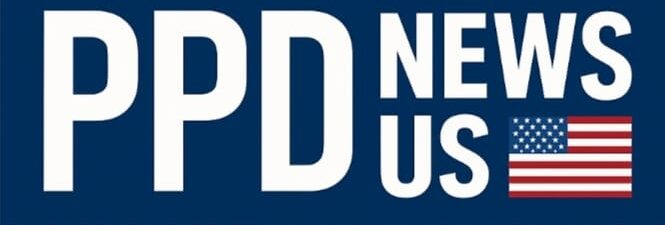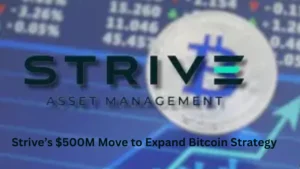In 2025, Ford Motor Company is once again confronted with a recurring issue: a significant recall that has prompted concerns regarding its production standards and long-term durability. The National Highway Traffic Safety Administration (NHTSA) announced on September 19, 2025, that over 101,000 Ford Taurus sedans must be recalled due to a defect that could result in the B-pillar door trim on the driver and passenger sides detaching while the vehicle is in motion.
It may seem like a small problem at first, but it has big effects. If those trim pieces fall free while driving on the highway, they can become deadly debris that can cause accidents or even cause trailing vehicles to crash. Although Ford has confirmed that no accidents or injuries have been reported so far, the recall has nevertheless set off alarm bells for consumers and industry analysts alike.
What Vehicles Are Impacted?
The recall covers Taurus models built between 2016 and 2019 in the United States. The detail that surprises many readers is that the Taurus has not been sold domestically since 2019, yet tens of thousands remain on American roads. According to NHTSA, the defect is linked to inadequate bonding of the exterior B-pillar appliques, a flaw that appears to have stemmed from production changes dating back to mid-2015.
Owners have seen early danger indicators in the last several months, such as trim pieces coming apart, constant rattling noises, or strange wind sounds coming from inside the cabin. NHTSA documented 38 formal complaints between March and September 2025, which pushed Ford’s internal Field Review Committee to classify the problem as a legitimate safety hazard on September 15, 2025. Interestingly, this same issue was mentioned in a 2019 technical service bulletin, but at the time it was not treated as a critical risk. That position has now shifted under regulatory scrutiny.
Ford’s Recall Plan and What Owners Should Do
Ford has outlined a two-step response. Starting on September 22, 2025, owners of affected cars will start getting interim notices. These letters will advise them to schedule a free inspection at Ford dealerships, where technicians will check the B-pillar trim and replace it if needed. The company has promised that the cost of parts and labor will not fall on customers.
But there is a catch: the permanent patch won’t be ready until the fourth quarter of 2025, so some owners may have to wait months for a final solution. Ford also tells drivers to keep an eye out for early signs like trim coming loose or strange noises in the interior. Owners are also encouraged to confirm their vehicle’s recall status by visiting nhtsa.gov/recalls or calling 1-866-436-7332 and referencing recall number 25V712.
A Year Dominated by Recalls
The Taurus case isn’t the only one like it; it’s part of a bigger pattern that has gotten Ford in the news for all the wrong reasons. So far in 2025, the automaker has faced 69 recalls, affecting around 3.5 million vehicles. Earlier this year, Ford had to recall 492,000 Explorer SUVs and 133,000 Lincoln Aviators for issues linked to door trim and assembly flaws.
Since 2015, Ford has logged more than 1,400 warranty claims related to adhesion failures, further fueling concerns about whether its assembly lines in Detroit and elsewhere are facing systemic quality-control problems. Consumer advocacy groups, including the Center for Auto Safety, have voiced sharp criticism. On social media, backlash has been swift, with drivers questioning whether Ford’s push to meet production goals has resulted in avoidable shortcuts.
Financial Fallout and Investor Anxiety
Fixing the Taurus issue right now could cost tens of millions of dollars from a financial point of view. Analysts estimate the total bill at around $76.7 million, though Ford has not provided an official figure. That number could rise significantly if lawsuits begin to emerge from frustrated owners who believe the company should have acted sooner.
The recall news also rattled Wall Street. Ford’s stock slipped slightly in Friday afternoon trading, reflecting investor unease. Currently, the company carries a Hold consensus rating, with an average price target of $10.77 per share. That target suggests about 7.7% downside risk, despite Ford’s stock having rallied nearly 8% over the past year.
The deeper concern for shareholders is reputational damage. Ford risks losing the confidence of its customers as it struggles with a wave of recalls, coming at a moment when rivalry in both conventional and electric vehicle markets is heating up. Long-term investors want to see if Ford can keep up with its big promises for innovation while still making good quality cars.
Innovation Amid Crisis: The Patent Buzz
Amid the turbulence, Ford has attempted to highlight its forward-looking side. Around the same time the recall was announced, reports surfaced of a new Ford patent for deployable workstations in pickup trucks. It’s a basic but sensible idea: a foldable table integrated into the tailgate that can be swung out and used as a work space on building sites or for fun.
To remain relevant in today’s competitive auto landscape, Ford is aiming to win over contractors, small companies, and customers drawn to outdoor lifestyles. But the difference is really clear. While patents point to an exciting future, the recalls suggest that Ford still struggles to get the fundamentals right on vehicles already in customers’ driveways.
The Bigger Picture
Ford Taurus owners should make safety their top concern right now by scheduling checkups and keeping an eye out for warning flags until permanent improvements come later this year. But for Ford as a company, the recall is a reminder of how big the gap is getting between what the brand promises and what it actually does.
Recalls happen a lot in the car business, but Ford’s difficulties in 2025 were exceptionally serious and happened a lot. The company has two problems: it needs to regain trust with customers and show investors that it can keep expenses down and protect its brand.
Analysts have said that Ford is stuck between being innovative and being responsible. The company’s ingenuity is shown by patents like deployable workstations, but it will need to make cars and trucks that are not only new but also safe and dependable in order to be successful in the long term.








